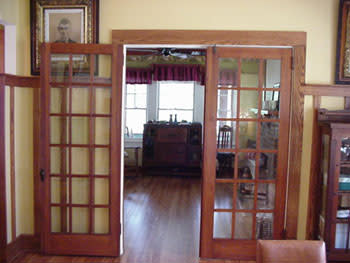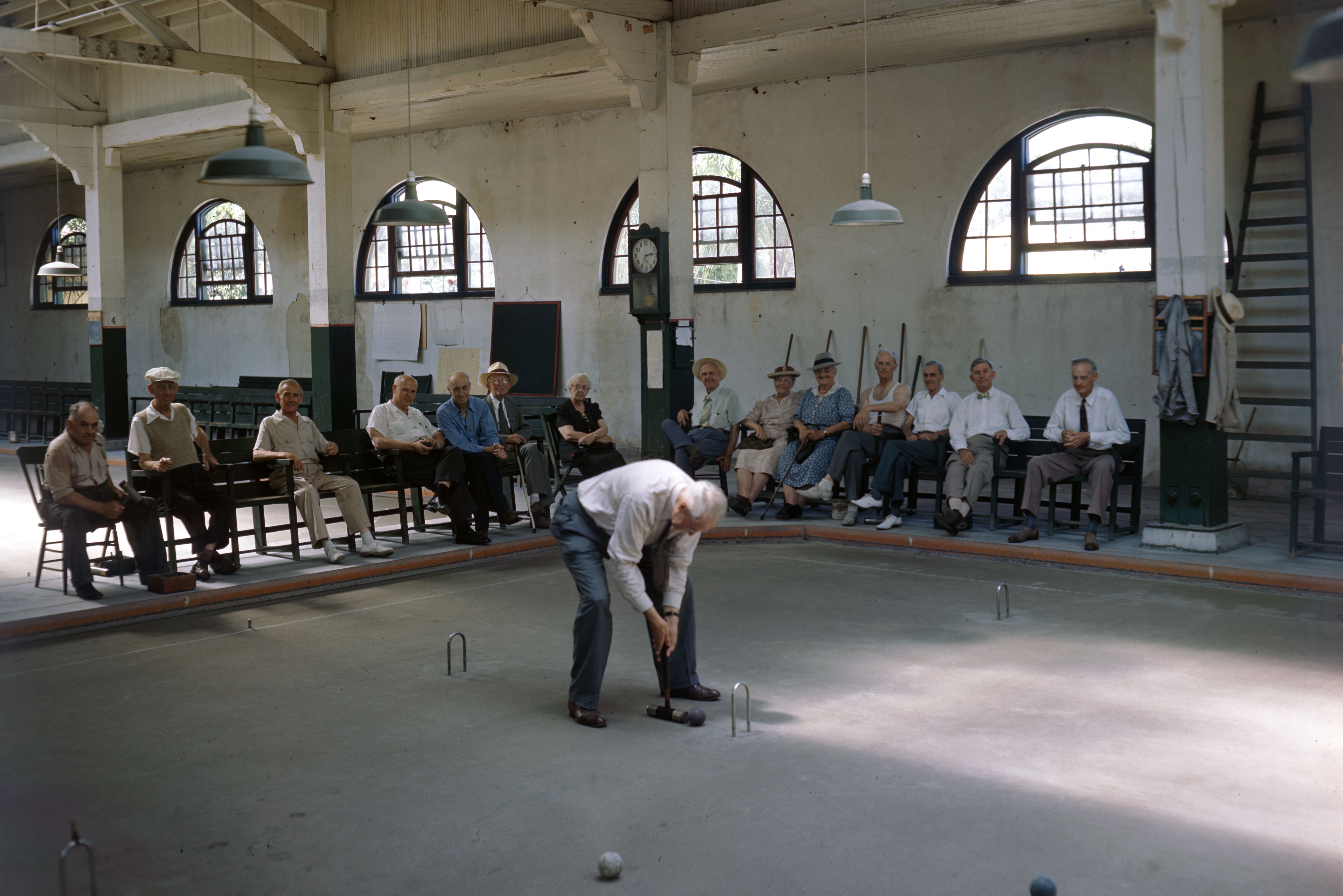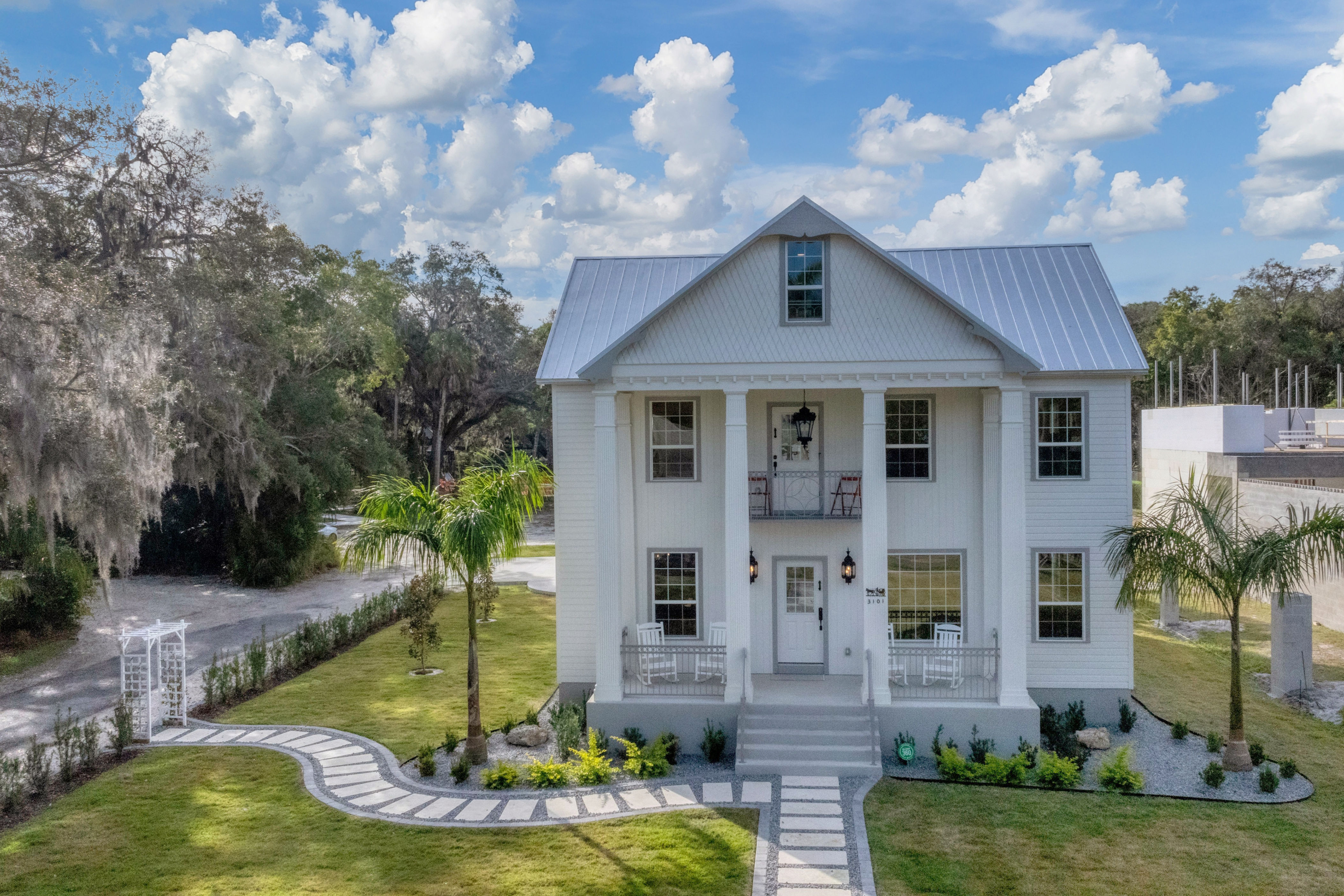Caples Convinced Ringlings to Come to Sarasota
[caption id="attachment_246" align="alignnone" width="488"]
At the turn of the 20th Century, Sarasota was hardly a vacation tourist spot. It was still mainly a fishing village with unpaved streets, fish houses on the bay front, and a very small population.
Ralph C. Caples and his wife, Ellen, first came to Sarasota in December 1899 by horse and buggy, on a delayed honeymoon trip through Florida. Ellen Caples later recalled that although the small town offered little enticement at the time, the view of the bay from the DeSoto Hotel (later known as the Belle Haven Inn), at the foot of Main Street was magnetic. Mr. Caples saw great opportunities for future development and seized upon the idea that extending the railroad into the area would generate a boom. Caples knew what he was talking about, having worked for the railroads since his graduation from college as a part-time yard clerk for the Lake Erie and Western Railroad. By 1905 he was General Agent for the New York Central railway system.
Caples immediately went to work on the plan. He realized that a railway connection with the New York Central Railroad would make Sarasota available to wealthy and influential people as a place to winter. He formed the Florida West Coast Railroad Company, and he proceeded to draw up plans for the railroad. However, Seaboard Airline Railroad got word of this plan and began to extend its rail south from Tampa to Sarasota. Caples' company went out of existence, but he managed to get the railroad to come to Sarasota years earlier than it would have.
After frequent visits to Sarasota from 1899 to 1909, the Caples decided to become permanent residents and purchased a log bungalow from W.H. English in Shell Beach, just north of Indian Beach on Sarasota Bay. Caples was convinced that Sarasota was going places and the time was ripe to invest in the area. He persuaded his friends, John and Charles Ringling, to come to Sarasota and take a look. In order to persuade John Ringling to become a permanent resident of Sarasota, he purchased the Thompson property at Shell Beach, adjacent to his estate in 1911. Ringling was convinced and purchased the Thompson property in 1911. Charles Ringling would purchase the adjoining property the next year.
By the time Charles Ringling made his commitment to build his mansion, the three had built a 2,000-foot seawall along their contiguous properties and upgraded their homes in preparation for connection to the growing electrical grid. In 1912, a shell road, lined on each side with palm trees, replaced the sandy trail along the bay. The Sarasota Times often noted the comings and goings of the Caples family. They came by private rail car, which would be "off-tracked" on the Indian Beach siding during their stay here. For local transportation during the winter, a chauffeur brought their automobile to Florida by steamer.
When in Sarasota, Caples turned to development and promotional interests. He continued to buy property and, in 1912, he bought the Belle Haven Inn with his partner, John F. Burket, from the Southern Investment Company. Sensing the potential growth of Sarasota, Caples also purchased 55 city lots from the same company in 1913, and on one fronting Main Street, he constructed the Caples Block building.
Caples urged the city to acquire a golf course in order to compete successfully with other Florida cities in attracting tourists, and during the Florida Land Boom of the early 1920s, Caples continued to buy and sell land in Sarasota. He was an early investor and director of the Mira Mar Company that built the Mira Mar Hotel behind Palm Avenue; Sarasota's first first-class downtown hotel.
When the Sarasota County Fair Association was looking for a new home, Caples' company, the East End Land Company, sold them the necessary land. This deal proved not to be a profitable one for Caples. According to Karl Grismer's book, "The Story of Sarasota," Caples, along with his partners A.B. Edwards and E.A. Cummers, were each given a $16,000 note in exchange for the land. When the circus made Sarasota its new winter quarters in 1927, the land was deeded over to the Ringling's and Caples, and his partners agreed to "forget" about the notes.
Always the promoter of Sarasota, Caples was there to provide help. When the City of Sarasota was looking for a site for a municipal airport, Caples, along with A.E. Cummer, gave 16 acres of land to the city. During the Great Depression, he was one of the advance money-men for the federal grants that were obtained for the construction of the Municipal Auditorium and Lido Casino.
In 1921 Caples established an advertising company that by the time of his death in 1949, had offices in Chicago, New York, Los Angeles and Omaha, Nebraska.
A talented singer, Ellen Caples served on the Music Committee of the Woman's Club for many years, having joined the organization soon after its formation in 1913. Her role as soloist at the First Presbyterian Church of New York was reflected in her participation in Sarasota's Presbyterian Church as soloist when in town. A friend later recalled that during the 1920s, when several couples picnicked at a cottage on Siesta Beach, the group would often gather around a fire in the evening and sing under the leadership of Caples and Dr. Joe Halton ("the singing doctor").
Mrs. Caples' musical interests in later life included hosting fund-raisers for the Florida West Coast Symphony. Ellen Caples was an active supporter of New College as it was being established in the early 1960s. Her enthusiasm for the school culminated in bequeathing her home and property to the college upon her death in 1971.
She and Ralph had built their stuccoed Mediterranean Revival style home in the late 1920s, to replace the original log bungalow on the site. Used for offices and classrooms, "Old Caples Hall" is one of four structures listed in the Caples'-Ringlings' Estates Historic District in the National Register of Historic Places.
Special thanks to Ann Shank, former Sarasota County Historian, and Mark D. Smith, former Sarasota County Archivist, for their research and time devoted to writing this article. Provided by Sarasota History Alive, "Where History Happens Everyday!" www.sarasotahistoryalive.com



